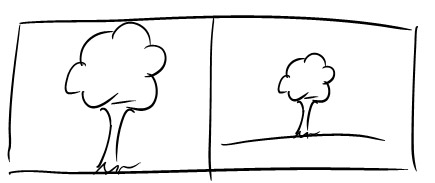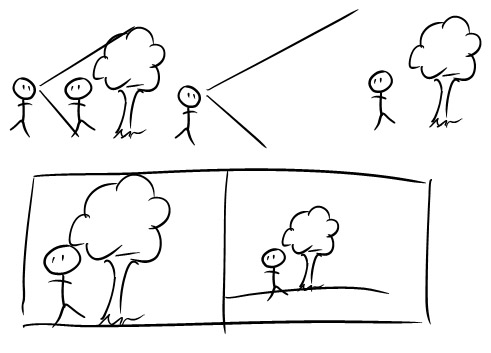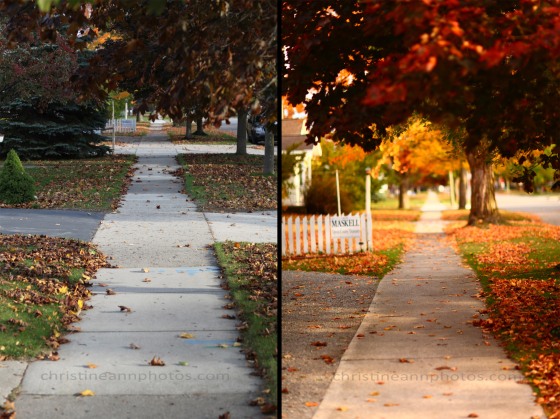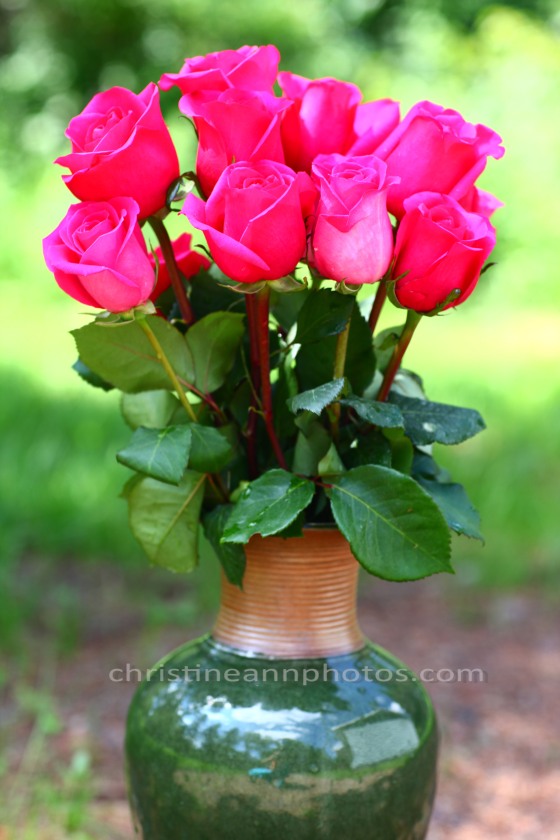Guest blog post from Christopher Fisher – my husband and occasional second shooter for large groups and weddings :).
Telephoto Distortion and zooming with your feet
Photographers often talk about “zooming with their feet”. If they are using a fixed lens or their telephoto lens and it cannot capture the size of subject they desire, they just move [with their feet] closer or further away from their subject. To the new photographer, they may not realize that zooming with their feet might compromise the composition of their photo. While the subject might be brought to size, the background will look significantly different.
This difference is due to an effect called telephoto distortion. A human eye (or a camera) is a small fixed point to which an image is projected. This can be visualized in the below diagram:
While a tree may be several times the size of a person, the image of a tree is focused into a single point: the human eye or camera lens. If the person walks closer to the tree, the subject appears larger. If the human being walks away from the tree, the subject appears smaller.
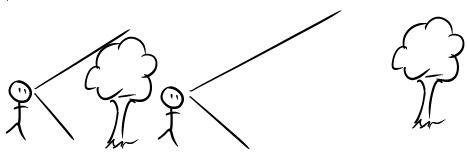
Look at the different figures. In the first figure, only a small section of the tree is visible. In the second figure, the entire height of the tree and more can be seen. Let’s see what each figure will see from the eye’s perspective.
Now let’s add a second subject:
-Christine Ann Photography
Duluth MN Photographer Website
Facebook

